Callum Turner on Accents, B-17s, and Crew Glue in “Masters of the Air”
Based on Donald L. Miller’s 2007 book of the same name, Masters of the Air on Apple TV+ has been praised as theatrical television that’s both true to history and beautiful to watch. Created by John Shiban and John Orloff, the show marries vast set builds with painstakingly correct CGI to depict the tragedies and heroics of the 100th Bomb Group, which flew over 300 combat missions and received two Distinguished Unit Citations but also suffered heavy losses of 177 aircraft during World War II.
Navigator Harry Crosby (Anthony Boyle) narrates Masters of the Air, but the show frequently hinges on the 100th’s star pilots, Major John “Bucky” Egan (Callum Turner) and Major Gale “Buck” Cleven (Austin Butler). The pair are best friends but temperamental opposites — Cleven is reserved and serious, committed to his fiancée at home, and doesn’t drink, while Egan is a joker spoiling for a fight, at least when he first arrives at the base in England. Butler and Egan originally auditioned for each other’s roles, but then switched.
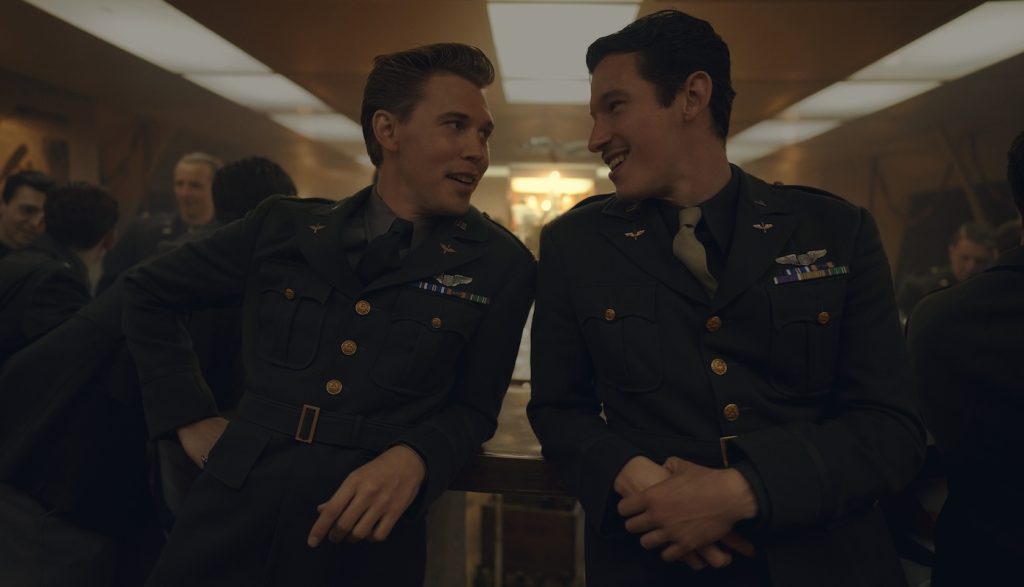
Butler’s breakout role was as Elvis in Baz Luhrmann’s 2022 biopic, and he brings similar elements of a country boy who’s done good to his role as Cleven. Turner, who grew up in London, is spot on in terms of both Egan’s Wisconsin-meets-New York accent and the waggish demeanor the pilot never quite loses, even after months in a German POW camp. But we also see Egan suffer immensely, both mentally and physically, which Turner portrays in a way that builds from episode to episode, as the major internalizes the danger he faces up in the air and in turn, the destruction he is causing to civilians below.
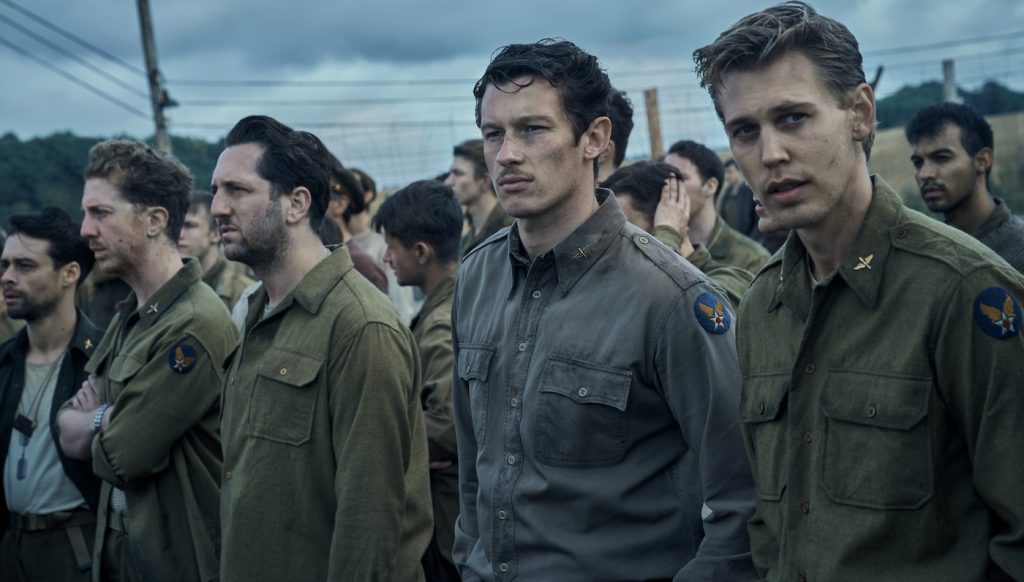
By the time we reach a tragicomic moment in which Egan tries to organize a group of his fellow POWs into “home” and “away” teams in a game of prison yard baseball, the major’s transformation is complete, even if there is still a glimpse of the boy he was when he first came to fight. We had the opportunity to speak with Turner about getting the reality of Egan’s arc right, leading his crew with Butler, and the friendship that defined the real major’s time at war.
The friendship Egan and Cleven share is integral to each of their characters. How did you and Austin Butler develop your rapport to achieve that?
First off, we just fell in love with each other as human beings and respect each other enormously as actors. We committed to the idea of being best friends and spent as much time with each other as possible, and got to know each other on a deeper level than is probably usual. The actual way these two operated was yin and yang, and I think that yin and yangness really helps their cadence with each other and their friendship. They were the two best pilots of B-17s at the time. They’d both joined up before Pearl Harbor had happened, they both wanted to fight the good fight, and realized they were the leaders in a pack of men and had to stand together and stand proudly. That was their connective tissue. Once they’re bound by trust and this truth and this togetherness, you can do anything. I love the fact that they don’t spend all their time with each other. Their ways of blowing off steam are completely different. Cleven likes to relax, take it easy, and be quiet; Egan is the opposite. That balance was really fun to play with.
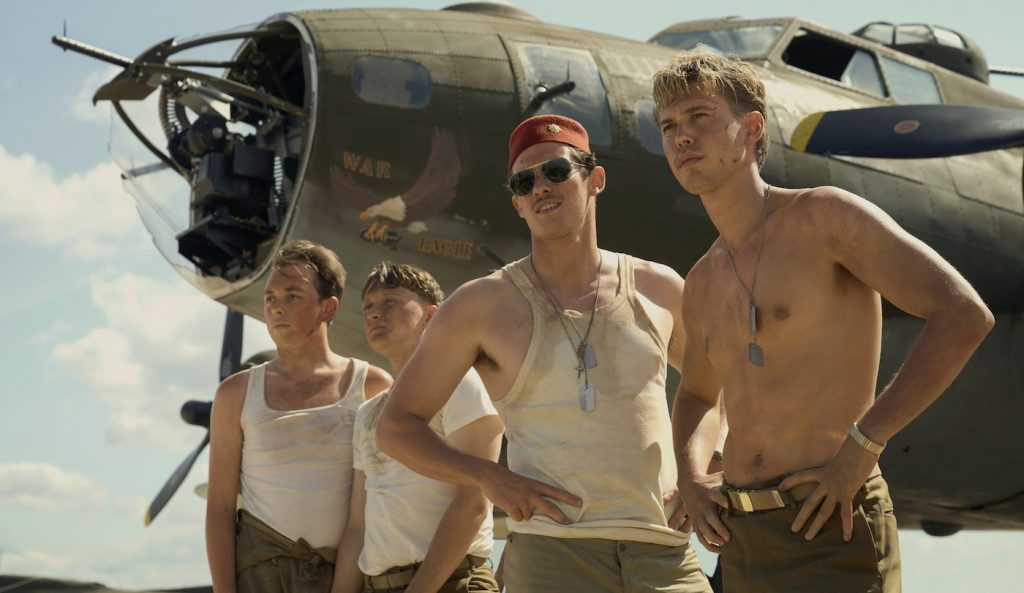
What was your training process like?
We started off with two weeks of boot camp with Dale Dye. He [advised on and played a role in] Platoon and has done pretty much every war epic since. What that was really about was creating what the real guys had, which was crew glue. Crew glue was the thing that kept everybody together, the ideology that kept everyone alive, that it’s not about you, it’s about the man next to you. That’s who you’re fighting for. You’re not fighting for yourself. There were really beautiful moments of togetherness. I think what we all realized very early on was the magnitude of what we were all involved in and how special it was for so many reasons — the fact that it’s legacy television and we’re in the same family as Band of Brothers and The Pacific, and people like Steven Spielberg, Tom Hanks. We’re also representing people who, as far as I’m concerned, saved the world. We all realized what we were up against and what we were doing this for. Everyone was a great bunch.
Did you do any sort of accent training to get Egan’s unusual Wisconsin accent down?
About two months before we shot, I met up with Brett Tyne, who was one of two dialect coaches—the other was Helen Ashton. I said to her, I want to stay in the accent the whole time, and I need to see you for two hours a day for two months. We really worked hard on that voice and trying to find that Wisconsin thing, but also, Egan was obsessed with New York. He was a huge fan of the Yankees, and he was obsessed with Damon Runyon. “Guys and Dolls” was a book I read over and over while we shot the show. He had this offbeat way of talking, this almost New York thing he was putting on. He was a really interesting character to find. Once we started shooting, we’d do an hour a day before work just to get that in the right place. Poor Brett.
How did you start researching the role?
There’s an abundance of information out there. I found this photo of a Russian soldier from World War I. It’s a before and after. Before, he’s fresh faced, he’s proud and ready to go and serve his country. He somehow survived, and he’s come back, but he’s a shell of a man. You can see the veins in his face and the wrinkles, the sunken eyes. That was something I recognized in Egan’s journey, and which he talked about himself. His arc was coming into the war with a naivety, thinking it’s going to be over in a year, and after seven months, he doesn’t recognize who he is anymore. He realized he had no one at home to support and no one to be supported by. He was dropping bombs on people and doing something that made him question what he was doing there. That was the fascinating journey for Egan, this journey into darkness. My grandad went to war, and he would never talk about it. I think that was the question: what did these people see that makes them never want to talk about it again? That was Egan’s journey, and by the end of it, he’s changed in a way that he never really recovered, I don’t think, to anywhere near a level that was okay for him again.
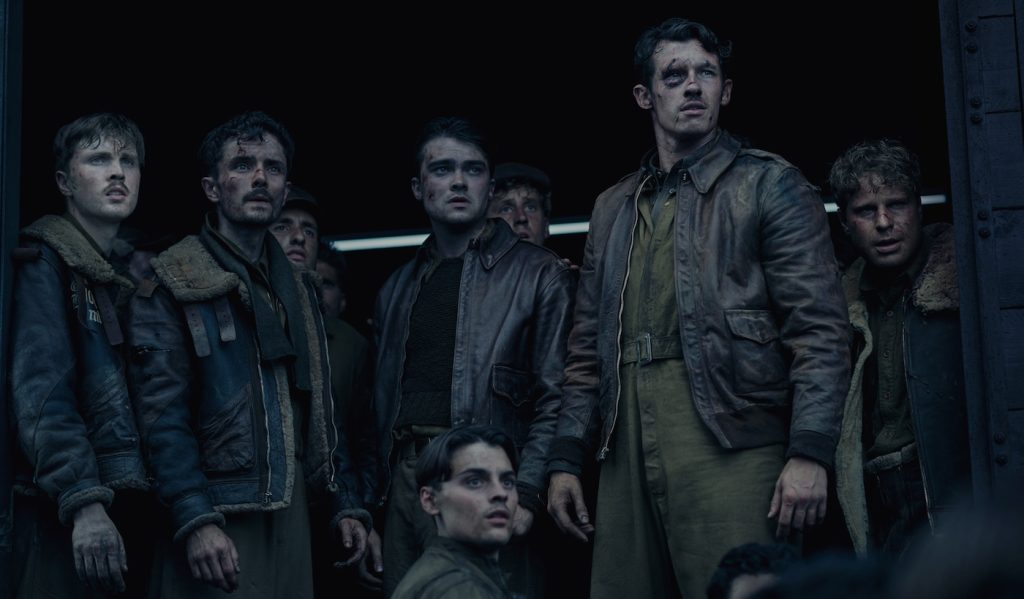
Was there particular media that also helped in your research?
There’s a film collection by Frank Capra and John Huston, amongst others, who went to World War II and filmed. I think John Huston did one in a hospital afterward, when soldiers would come back, and he would show what was happening to these men, what we would now call PTSD. And there were so many books. There was a book about an English pilot who went down over Holland and tried to escape. I just tried to take on as much information before we started trying to build this human being, this character.
You also did flight training, right?
We didn’t have any real B-17s, but we had replicas that would move. We had Taigh [Ramey, the WWII aviation advisor and B17 technical advisor], who would train us. We had to know every button on the dashboard, what it meant, and how to use it. He’d put us in the cockpit, and say, okay, this is happening, what do you need to do? The funny thing about working with 200 young men is everyone’s really competitive. No one wanted to be the one who was left behind, so we were all very on it with that.
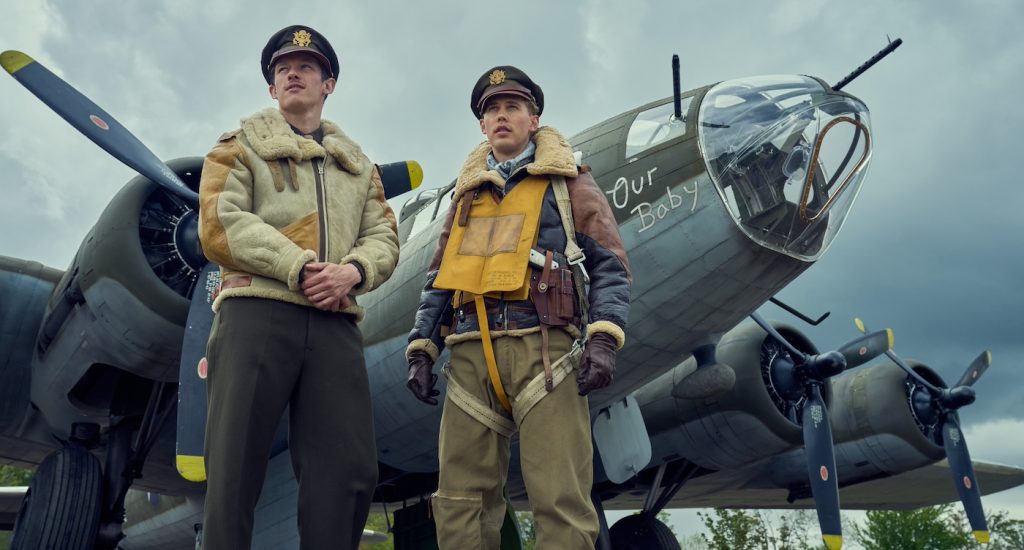
How did you fare?
I think I was probably top three. Our ranks were important. Austin and I definitely felt that we had to lead from the front. There was a lot of responsibility in that. It was our job to set the tone for these guys to follow. If I was number 11, that wouldn’t have been good.
Was there a sense of responsibility going into this role, playing a real person? Did you approach the role differently than you would a fictional character?
I don’t know if I would approach it differently, but I definitely felt the pressure. Honor is a word these men had, and that’s what we were trying to do — honor them. That’s what I love about this show; we do honor them in a way that’s truthful and honest. We don’t glamorize war and glorify them in a way that I don’t think they would want. We really look at the effects of war and what happens to these men, not just fighting against the Germans, watching their friends being blown up and falling to the ground from 25,000 feet, but also dropping bombs on people — what that does to your soul and psyche. We really show, back on the ground, how that affects their behavior and how that changes them as men. That’s one of the many things I’m really proud of about the show: that we don’t glorify this horrific moment in our history.
Masters of the Air is streaming on Apple TV+.
For more stories on Apple TV+ series and films, check these out:
“Silo” Creator Graham Yost Unseals the Secrets of Season 1
How the Latest VFX Techniques Immersed the “Masters of the Air” Actors in Battle
Featured image: Callum Turner in “Masters of the Air,” now streaming on Apple TV+.



